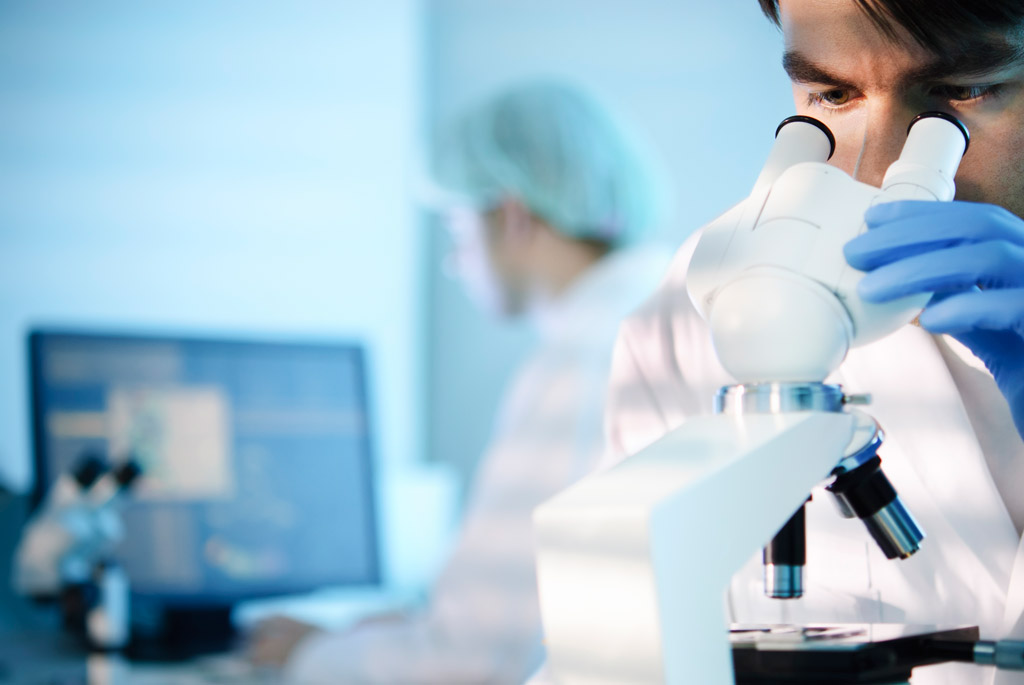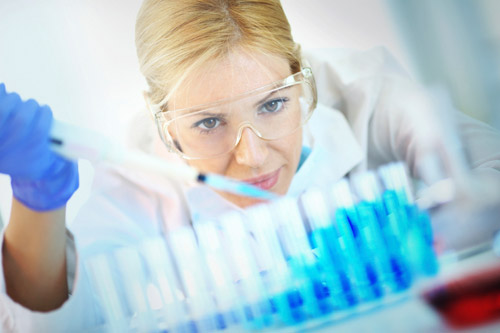This is only the beginning...
A lot happens between giving a sample and getting results. Scroll down to learn more about how the laboratory is involved with your health.

A lot happens between giving a sample and getting results. Scroll down to learn more about how the laboratory is involved with your health.


When your primary health care provider is looking for answers, they may turn to laboratory tests. Highly trained medical laboratory professionals sort, analyze and run tests on your samples to provide accurate results that are vital to your health care.
Testing done in the medical laboratory is an important part of your health. The results from laboratory testing can lead to the diagnosis and treatment of illness or disease in every part of your body.
Discover how medical laboratory professionals are involved in your health. Click on the points to learn about some of the testing done on that body part.

Medical laboratory professionals work around the clock to provide accurate and timely results vital to medical decisions about your health. These health care professionals use a variety of instruments and equipment to collect, prepare and analyze tissue and fluid samples.
Hover your cursor over each professional below to learn more about them.

Medical Laboratory Technologists (MLTs) use a variety of complex instruments to analyze tissue samples, blood and other body fluids as a part of the diagnostic procedure. MLTs provide the results of these sophisticated tests to physicians, allowing them to make accurate diagnosis and if needed, appropriate treatment.

Medical Laboratory Assistants (MLAs) work under the supervision of a Medical Laboratory Technologist (MLT), performing the practical components of sample analysis. MLAs sort, prepare and sometimes process samples that will be tested and analyzed by a MLT. MLAs often collect samples, such as blood, and are the laboratory professional that likely interacts directly with patients.

Cytotechnologists are health professionals that analyze cellular changes that can determine the presence of specific diseases. Mostly through the use of slides under a microscope, cytotechnologists are able to detect pre-cancerous cells, different cancers and other cellular based infections. An abnormal finding would be sent to a pathologist for a final diagnosis.

Genetic Technologists use a variety of instruments to analyze and diagnose changes or abnormalities in chromosomes and DNA, which are unique to every individual. A genetic technologist's analysis of these cells can lead to a diagnosis of genetic diseases.
As a patient, the care you receive is supported by medical laboratory professionals. You may never see them, but their impact on patient care is bigger than you may think. They work around the clock to provide accurate and timely results vital to your health – giving you the answers you need, when you need them most.
There are over 440 million lab tests performed on a yearly basis in Canada. Discover how lab tests make a difference by clicking on each discipline below.

Clinical Chemistry
Clinical Microbiology
Hematology
Diagnostic Cytology
Clinical Genetics
Transfusion Science
Histology
Clinical Chemistry
Medical laboratory professionals are proud of the work they do and how their job contributes to patient care. This is what few medical laboratory professionals had to say about their role in health care.
MLTs are a catalyst for patients being diagnosed and treated so they can feel good again.


Jennifer O'Neill
I am proud to represent a profession that plays an integral part in patient care and diagnosis!


Krista Urchenko
The ability to perform a procedure such as phlebotomy while making someone smile is what I love most about my job. I do my best to create an encouraging atmosphere that allows patients to feel comfortable.


Samantha Tanner
The thing I love most about being an MLT, is the variety of disciplines to work in. There is always something new to learn and discover.


Evelyn Aboagye
My contribution to patient health and well-being really makes a difference.


Mary Emes
I am happy to be able to help my community members in their times of need when they are sick.


Kim Mathison
Help us raise awareness about the important work done by medical laboratory professionals in Canada. Please share our message.
#LabWeek